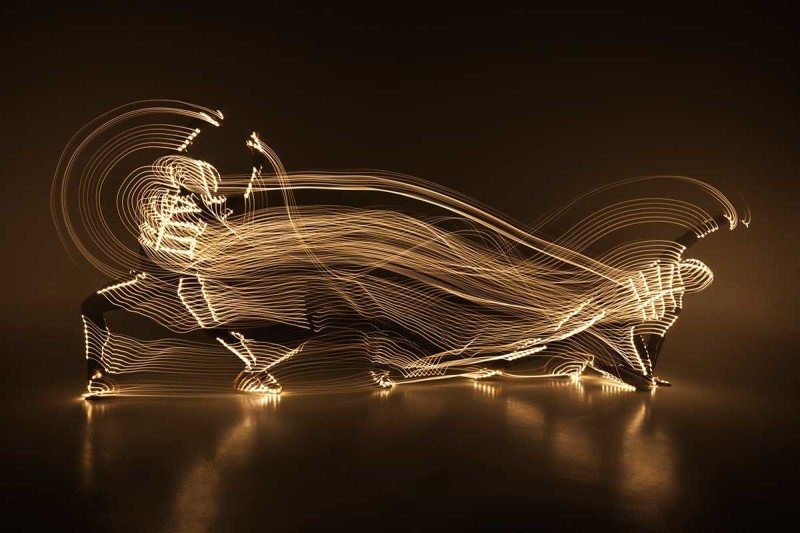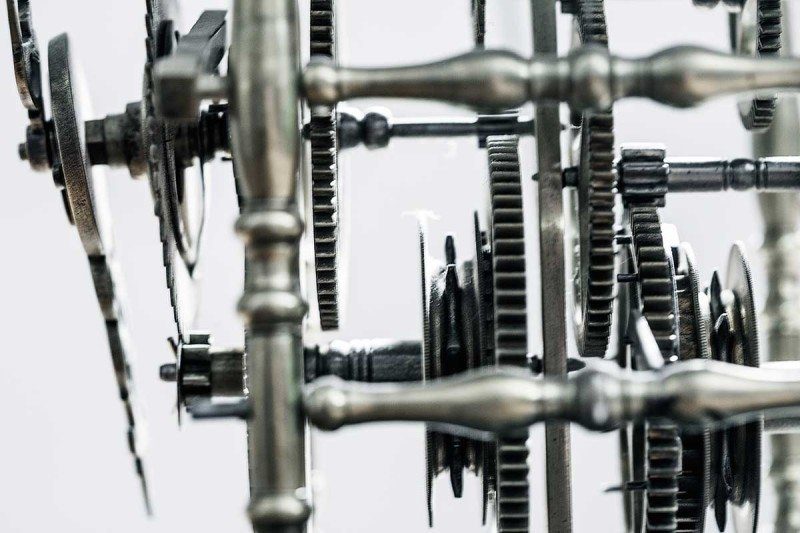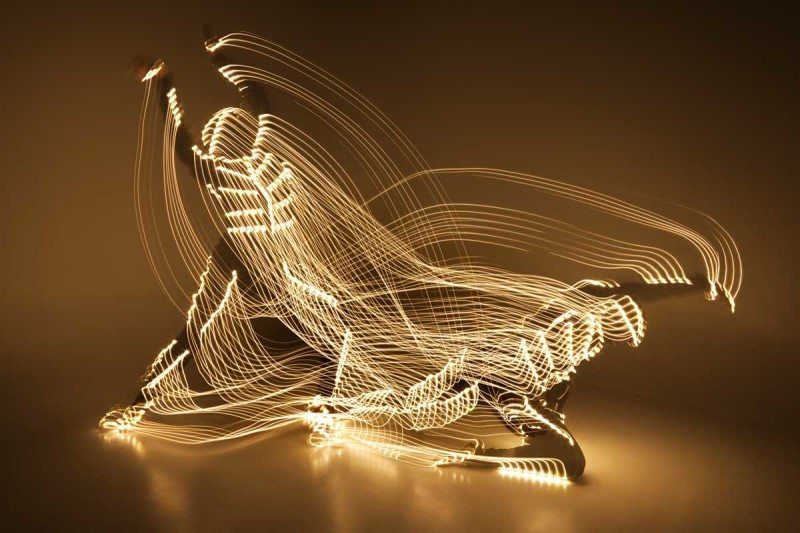
© Henrik Sorensen/Getty
THE philosopher Augustine of Hippo once wrote that he felt he knew what time was, so long as no one asked him. Fast forward 16 centuries and the picture has hardly changed, says physicist
Carlo Rovelli. Time is "perhaps the greatest mystery", he says. "At the most fundamental level we currently know of, there is little that resembles time as we experience it."
The passage of time - a uniform, universal flow that transports us inexorably from a past we cannot revisit to a future we cannot know - is perhaps the most fundamental experience of our existence.
Yet our best theories suggest that it is not real. Time doesn't flow, and past, present and future cannot sensibly be defined. There isn't even one single time that governs the order of events.
Rovelli, who works at Aix-Marseille University in France, is just one of many physicists hunting for a better answer. As they do, a new generation of experiments is giving hope that we can probe the nature of time more searchingly than ever before. In all this, a strange realisation is crystallising, one that perhaps brings us a little closer to the heart of the mystery. Maybe we shouldn't be so worried about our ignorance of time. Perhaps, at some level, time is just that - ignorance.
A century ago, Albert Einstein revolutionised our ideas of time. His
theories of relativity gave time a physical identity as part of space-time, a
malleable fabric on which reality's events play out (see "
Why now doesn't exist, and other strange facts about time").
Einstein's ideas are mathematically sound and rigorously confirmed by experiments, but moulding together space and time as if they were the same thing doesn't square with our experience. True, both space and time separate objects and events. But we are free to move as we please in space, at least in theory. Time, on the other hand, dictates a direction of travel, trapping us in an eternal present as it conveys us from the past to the future.
If this flowing time is not contained within our fundamental description, where does it come from? Most modern efforts to understand it begin with the
second law of thermodynamics. This says that the entropy of the universe - its overall disorder, essentially - always increases. The argument is superficially convincing: you can't unscramble an egg or unspill a glass of wine emptied onto your beautiful Afghan carpet, because to do so is to decrease entropy. Many physicists interpret entropy increase as time's arrow: a one-way street for the processes of the universe. If relativity gives us the outline of the stage on which reality plays out, thermodynamics explains why the play always follows the same plot line.
Mysterious beginningsEssentially, that plot follows the statistical law of averages. Highly ordered states are unlikely: think atoms stacked neatly in one corner of a box. Entropy tends to increase because we move towards more likely states: all the atoms distributed at random throughout the box. Tracing the universe back in time to its beginning, you follow a path to a more and more implausible, low-entropy state. The remaining mystery, then, is why the universe began in such an improbable state.
Not so fast. Firstly, we have no evidence that the universe's overall entropy is actually increasing. It could be just a local phenomenon, like a cold snap in a warming global climate. Secondly, the second law of thermodynamics only applies to closed systems
whose total energy remains unchanged - and again, it is far from clear this applies to the universe. "Is the universe in a box?" asks physicist
Julian Barbour at the University of Oxford. "It doesn't seem plausible. All the evidence is that it's expanding without limits." If it is, restrictions based on entropy probably don't apply.
And there are further difficulties. Relativity says that for photons travelling through the vacuum of space at the speed of light, time is infinitely dilated, so it effectively stops. What's more, the
laws governing how fundamental particles behave are independent of time's direction. Film these processes, and you can't tell which way the film is running. The one exception is the interactions of particles known as neutral kaons, which do appear to change if time is reversed. All this has little to do with unscrambling eggs, reckons
Joan Vaccaro of Griffith University in Brisbane, Australia. "There's more to time than entropy increase," she says.
The emerging arrowThis is where the ideas of Rovelli and his fellow travellers come in. Their aim is to dig beyond thermodynamics and find what makes it such a compelling - but slippery - mechanism to understand time.
Their starting point is the origin of thermodynamics as a deliberate approximation, using statistically averaged properties of large numbers of atoms to sidestep our ignorance of what individual atoms are doing. This averaging process has echoes of the uncertainties inherent in the theory that ultimately underlies the workings of all atoms:
quantum theory. If we're seeking answers to the fundamental mystery that is time, we should surely be seeking it here.
That's not straightforward. Quantum theory and relativity
famously disagree on most things, so it is no surprise that there's no love lost between their descriptions of time, either. In the equations of quantum theory, time is not a dynamic, malleable component of the fabric of the universe, as it is in relativity. It is something much closer to the way we intuitively think of it, as a steady beat of a clock that sits somewhere outside the universe, against which the processes of reality play out.
Perhaps, then, we have things backwards, and
particles create time rather than being ruled by it. In 1972, the French mathematician
Alain Connes discovered a quantum version of time in algebra the polymath John von Neumann had developed in the 1930s to explore quantum theory - and promptly forgot about it. "I did not know what role it could have in physics and how it could relate to the classical notion of time," says Connes.
In 1994, he bumped into Rovelli in Cambridge, UK. Rovelli had just written two papers about the role of time in theories that seek to unite relativity and quantum theory. Rovelli's ideas matched up with Connes's quantum time, and they began to collaborate.
The core of the argument they have developed is that time's arrow emerges from interactions between microscopic quantum objects - atoms, photons of light and the like - and macroscopic classical objects that "measure" those objects' properties. Measurement is hugely important in the quantum world. Before a measurement, we have only probabilities concerning the position or momentum, say, of a quantum object. Only afterwards does uncertainty
collapse into classical certainty.
Except it doesn't, quite. Heisenberg's
quantum uncertainty principle states that our knowledge of the quantum world is limited even after measurement. The more precisely we know one property, such as position, the more limited we are in determining another, such as momentum. Since all measurement outcomes are probabilistic, varying from case to case, the order in which we make measurements determines their outcome. "The true variability underlying physics is not the passing of time, but the 'non-reproducibility' of the outcome of quantum experiments," says Connes.
That would mean that time isn't fundamental.
There is no order of time in the quantum world; temporal order appears only when processes such as measurement irreversibly turn quantum phenomena into observable classical phenomena. Applied to thermal systems, what emerges matches the second law of thermodynamics. "The flow has the same properties as what we call time," says Rovelli.
In this picture we have, in effect, reverse-engineered equations that contain the kind of time we think we see, without it ever really being there. Rovelli calls it a "
perspectival origin of time", an illusion that results from limited information - our own ignorance. It is as if we only ever saw light through a polarising filter, and so concluded that all light was polarised in one direction. "We are little things, even with all our telescopes and microscopes," says Rovelli. "We interact with an extremely minute part of the universe. There might be entire domains of it we don't yet know about."

© plainpicture/Sven Hagolani
This isn't the only idea rooting time in quantum ignorance. Another sees time's origins in the
workings of entanglement. Entanglement, which seemingly allows instantaneous influences to travel between quantum particles that have previously interacted, defies our intuitive notions of time and space. But again, perhaps we have things backwards: that strange defiance of the apparent rules could be because entanglement creates time in the first place. In this view, first suggested by Don Page and William Wootters in 1983, time originates from the distribution of quantum matter relative to the background space. The background space takes on the role of a clock, but thanks to quantum superposition - the ability of quantum objects to be in multiple states at once - that space is distributed in many ways simultaneously, with each element in the superposition beating out a different time.
In 2016,
Chiara Marletto and
Vlatko Vedral at the University of Oxford
revisited and extended this idea, showing how different distributions of matter with varying degrees of entanglement give something equivalent to a collection of different entropy states - that is, a sense of time passing - despite the universe as a whole having every state coexisting and no passing time. It is, Vedral admits, a "very bizarre" idea. Bizarre - but one we might just be on the verge of testing.
That's the aim of
Aephraim Steinberg, an experimental physicist at the University of Toronto in Canada. He has spent decades thinking about the duration of quantum events such as tunnelling, in which a quantum particle such as an atomic electron hits an energy barrier that would, to a classical particle, be insurmountable. In some cases, the electron is liberated from its atom and burrows through the barrier, instantaneously appearing on the other side. This is not just a theoretical idea: it happens, and is central to how modern electronics works.
According to the most popular notion of how tunnelling occurs, derived from relativistic quantum field theory, it takes place in no time at all, with the electron travelling faster than light. That rings alarm bells. "Most of us are very careful about this - we shouldn't really think about things travelling faster than light," says Steinberg.
Tunnelling in timeSteinberg points out that this theory indicates that the tunnelling atom creates an entanglement between regions of space on either side of the barrier. Independent measurements of both regions should therefore shed light on how time, space and matter are related, and whether something "instantaneous" can really happen. It might even reveal something deeper about quantum entanglement's relation to time. "I think there's a direct link," says Steinberg.
His team has been meticulously working towards asking the question experimentally. The basic idea is to have ultracold atoms, cooled to a billionth of a degree above absolute zero, tunnel through a barrier formed by the tightly focused electromagnetic fields of a laser beam. "We've started to see the atoms tunnel through," says Steinberg. "Now we have to add a measurement of how long they sit inside the barrier."

© Henrik Sorensen/Getty
The trouble is, there's no standard clock that can do that - each atom must carry its own stopwatch. The team is currently working on using the atoms' intrinsic spin, the orientation of which rotates at a standard rate in a magnetic field, as a measure of how long they have felt the magnetic field of the barrier. The spin will be measured on both sides of the barrier, and the answers will reveal how long the atom took to cross it. "It's all known bits of technology, it's just a question of getting them all to work together," says Steinberg.
Yet even if such experiments, and proposals such as those of Rovelli and Connes, do suggest a quantum origin of our experience of flowing time, a big question remains: how this relates to the kind of dynamic, shape-shifting, but non-flowing time predicted by relativity. Our growing dexterity with quantum systems could bring us new insights here, too. We could, for instance, be close to
putting an atomic clock in a superposition of two different states that experience different strengths of Earth's gravitational field and so, according to Einstein's general theory of relativity, should run at two different speeds. "It's very challenging experimentally, but we could soon ask what it means to feel two different rates of time simultaneously," says Vedral.
The fabric of realityWe might find, for example, that atomic clocks in superposition generate some kind of interference effect in time, much as single photons going through both openings of a double-slit experiment create a spatial interference pattern on a screen beyond, showing they were in two places at once. Or gravity might collapse quantum superpositions, acting as a ratchet on the free motions of the quantum world - an idea that Roger Penrose, also at the University of Oxford, has long backed. "Something genuinely irreversible might happen at that level. Then you've got the arrow of time for free," says Vedral. This would give us hints of what a "
quantum gravity" theory might look like and, maybe, where the flow of time comes from.
Or perhaps not, says
Huw Price, a philosopher at the University of Cambridge. If physics tells us that intuitive features of time such as its flow, a special "now" and a deep difference between past and future are not fundamental to the fabric of reality, perhaps a complete understanding will only come from marrying physics and psychology.
Rovelli agrees that, in the end, there may not be one universally valid answer to the question of
what time is. "When we think about time, we tend to think about it as a single package, and that's definitely wrong," he says. There's the psychological time of our experience; the passing instants of time that clocks measure; relative time as explored by Einstein; time as entropy increase; and perhaps, now, time rooted in quantum ignorance. "It's a beautiful problem because it brings together so many things," says Rovelli. "I don't think we're anywhere near the end of the story, but there is real progress."
Comment: See also: